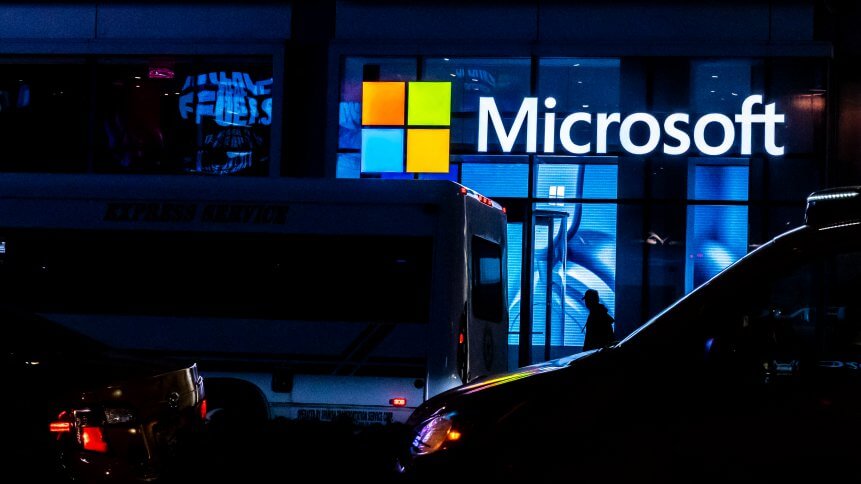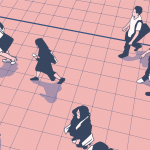Microsoft says hybrid work culture is the next disruption – but are we ready?

- Microsoft released a Work Trend Index to try and paint a more complete picture of the hybrid work-life culture that the pandemic has wrought
- Microsoft believes its Teams software has become more siloed the last two years, and digital exhaustion is a real threat
- Findings by the company also showed that leaders are out of touch with employees and are faring better than their employees in this climate
Throughout 2020, there was a huge discussion surrounding our preparedness for a remote work culture. Now as we transition to a hybrid work style – are we ready for it? Truth be told, we were not ready for mass working from home, just like we weren’t ready for the pandemic. In a nutshell, we’re never ready for disruption, we just have to embrace it and adapt as it comes.
Whether we like it or not, almost every organization is on the brink of more disruptive happenings following last year’s sudden shift to remote work, and the massive tech adoption for enterprises that accompanied it. Currently, it is the move to hybrid work culture, a blended model where some employees return to the workplace and others continue to work from home, often on a rotating schedule or as per the firm’s manpower needs.
More recently, Microsoft wondered whether we are ready for the jump to hybrid work, and released its Work Trend Index that tried to paint a more complete picture of the work-life balance shift that Covid has wrought over the past year.
“We know two things for sure: flexible work is here to stay, and the talent landscape has fundamentally shifted. Remote work has created new job opportunities for some, offered more family time, and provided options for whether or when to commute. But there are also challenges ahead. Teams have become more siloed this year and digital exhaustion is a real and unsustainable threat,” the report reads.
Microsoft’s 2021 Work Trend Index looks at several trends that will shape the future of hybrid work, outlining the findings from a study of more than 30,000 people in 31 countries.
Flexible work is here to stay
The Microsoft findings uncovered employees want the best of both worlds: over 70% of workers want flexible remote work options to continue, while over 65% are craving more in-person time with their teams. To prepare, two-thirds (66%) of business decision-makers are considering redesigning physical spaces to better accommodate hybrid work environments. The data is clear: extreme flexibility and hybrid work will define the post-pandemic workplace.
Microsoft’s CEO Satya Nadella said “Employee expectations are changing, and we will need to define productivity much more broadly — inclusive of collaboration, learning, and wellbeing to drive career advancement for every worker, including frontline and knowledge workers, as well as for new graduates and those who are in the workforce today. All this needs to be done with flexibility in when, where, and how people work.”
It’s equally important to note, however, that leaders may be too narrowly focused on where to invest. Even after a year of working from home, nearly half (42%) of employees say they lack essential office supplies at home, and one in 10 don’t have an adequate internet connection to do their job. Yet, over 46% say their employer does not help them with remote work expenses.
Leaders are out of touch with employees?
A rather shocking revelation by the report shows that 61% of leaders described themselves as “thriving”, and workers feel the disconnect. Some 37% of the global workforce says their companies are asking too much of them at a time like this. In short, business leaders are faring better than their employees.
Microsoft 365 CVP Jared Spataro believes that “Those impromptu encounters at the office help keep leaders honest. With remote work, there are fewer chances to ask employees, ‘Hey, how are you?’ and then pick up on important cues as they respond. But the data is clear: Our people are struggling. And we need to find new ways to help them.”
High productivity workforces are exhausted
Self-assessed productivity has remained the same or higher for many employees over the past year, but at a human cost. One in five global survey respondents says their employer doesn’t care about their work-life balance while 54% feel overworked. 39% feel exhausted, and trillions of productivity signals from Microsoft 365 quantify the precise digital exhaustion workers are feeling.
The digital intensity of workers’ days has increased substantially, with the average number of meetings and chats steadily increasing since last year. Specifically, when Microsoft compares collaboration trends in Microsoft 365 between February 2020 and February 2021, it is found that time spent in Microsoft Teams meetings has more than doubled (2.5X) globally and, aside from a holiday dip in December, continues to climb. Besides that, the average meeting is 10 minutes longer, increasing from 35 to 45 minutes.
Other less-than-pleasing findings from the report include: the average Teams user is sending 45% more chats per week and 42% more chats per person after hours, with chats per week still on the rise. The number of emails delivered to commercial and education customers in February, when compared to the same month last year, is up by 40.6 billion “and we’ve seen a 66% increase in the number of people working on documents,” according to Microsoft.
Even with meeting and chat overload, 50% of people respond to Teams chats within five minutes or less, a response time that has not changed year-over-year. “This proves the intensity of our workday, and that what is expected of employees during this time, has increased significantly,” Microsoft said.









